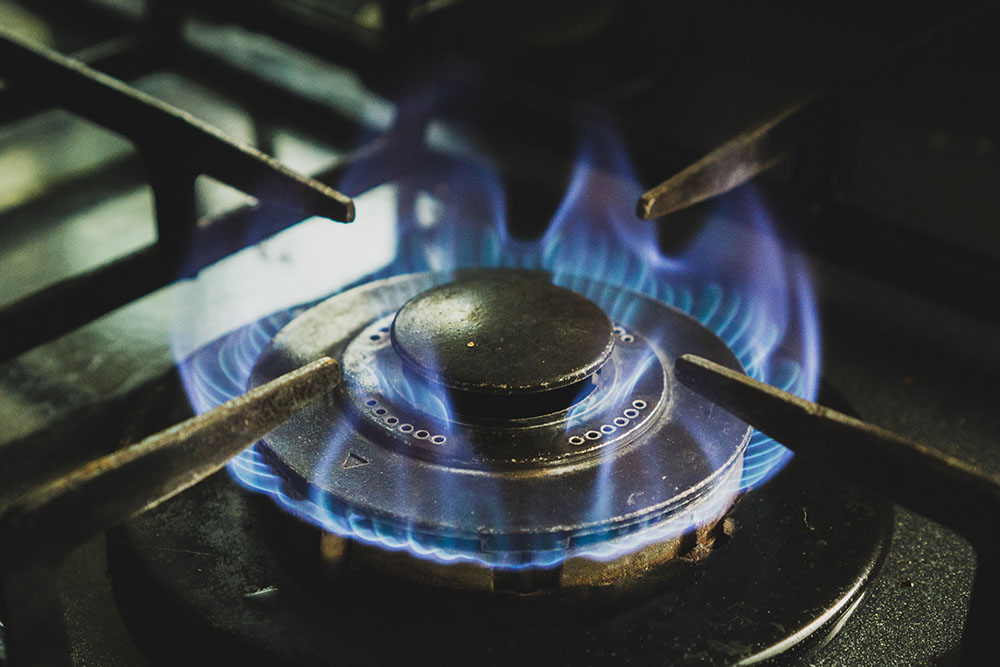Liquefied petroleum gas-usually propane-is the most convenient cooking fuel for a boat. On a boat, LPG is also by far-the most dangerous cooking fuel. Propane and butane are heavier than air, so they “spill” like water. Leaking propane in a house falls to the floor, usually dispersing harmlessly on air currents, but a boat is like a bowl, and leaking gas accumulates in the bottom of it.
However, the popularity of LPG attests that you can minimize the risk of explosion with a proper installation and good safety habits. Location – The best place for propane tanks is on deck. If you want them out of sight, the locker you put them in must be vapor-tight and separated from the boat’s interior. It must open only above deck and have a drain at the bottom to let leaking gas escape over the side. Be sure the drain outlet is not located near any other hull opening and that it is always above the water, even when the boat is heeled. Aluminum tanks are more suitable for the marine environment.
Pressure Gauge – A pressure gauge is an essential safety feature, and it must be the first thing connected to the valve on top of the bottle. It can be mounted directly on the bottle or installed on the locker wall and connected to the bottle with a high-pressure pigtail. The gauge does not tell you the level of the gas in the tank; you weigh the tank to determine that. What the pressure gauge does do is allows you to easily-and frequently-leak test the LPG system. Regulator and Solenoid – The regulator (to reduce pressure) is next, and that must be followed immediately with an electric solenoid shut-off valve wired to a convenient switch in the cabin. The switch panel should include a bright warning light to tell you when the solenoid is on. The solenoid should always be off except when the stove is in use.
Supply Hoses – The fuel line from the solenoid valve to the stove must be continuous – no connections inside the boat except at the stove. Solid copper fuel lines are used extensively in many parts of the world, but a flexible, high-pressure hose is probably safer for boat use, and it is certainly easier to install. When connecting the supply hose to the solenoid, an adapter is usually required. Wrap the threads of the solenoid end of the adapter with Teflon sealing tape. Do not use Teflon tape on the hose end. The rule is that when the threads form the seal, you need Teflon tape, but not when the seal is formed with a flare, O-ring, or other compression fitting. The hose should exit the propane locker near the top, and it should pass through a vapor-tight fitting to prevent gas from leaking out of the locker into the interior of the boat. Use a similar fitting to protect the hose from abrasion everywhere it passes through a bulkhead. Be sure to protect the hose from abrasion and excessive heat (140F). LPG hose should run through the top of lockers rather than through their bottoms. Support the hose every 18″ with nylon cable clamps.
Use – To operate the system, the valve on the tank must be open. From inside the cabin, a flip of the solenoid switch allows the gas into the supply hose that feeds the stove. Open the burner valve and light the flame. When you are through cooking, leave one burner ignited and turn off the solenoid. When the burner goes out, then close the burner valve. This empties the line of gas so that none will leak into the bilge should a burner valve fail to seal. If you will leave the boat unattended for a while, it is a good practice to close the valve on the tank to eliminate all risk of undetected leakage.
Testing – If you are using the stove regularly, you should make a habit of testing the system for leaks. (Once a week is not too often.) To test the system, operate the stove, then close all the burner valves, but leave the solenoid switch on. Read the pressure gauge, and then turn off the manual valve on the tank. After three minutes, read the pressure again. If it is unchanged, wait 15 minutes and read it again. Any drop in pressure indicates a leak that must be located (with soapy water) and stopped. If the system is leak-free, re-open the tank valve, light a burner, then shut off the solenoid as normal.

